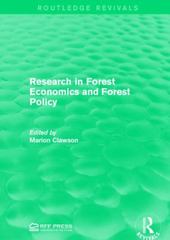Question
QUESTION 11 The policy used by Robert Moses in New York City to tear down older housing was known as: a. White flight b. Benign
QUESTION 11 The policy used by Robert Moses in New York City to tear down older housing was known as: a. White flight b. Benign neglect c. Great migration d. Urban renewal
QUESTION 12 Research into the Drug Abuse Resistance Education (D.A.R.E.) program has shown that: a. It is always successful at reducing drug use among young people b. It does not generally reduce drug use among young people c. It is successful with young children but not with older youth d. It is successful with older youth but not with young children
QUESTION 13 In his research on racial bias in terms of unarmed targets, Correll found that police who work in gang units: a. Show more bias in their responses than other police b. Show less bias in their responses than other police c. Show the same bias as other police in their responses d. Show no bias compared to other police
QUESTION 14 Contreras says that the crack business owners in his neighborhood in the 1980s saw crack dealing as a path to: a. Prison b. The American Dream c. Gentrification d. White-collar jobs
QUESTION 15 Broken Windows theory didn't really work in practice. The evidence we have that it didn't work is that: a. Crime increased in cities that implemented Broken Windows policing b. Crime decreased in cities that did not implement Broken Windows policing c. Crime increased in cities that did not implement Broken Windows policing d. Crime rates stayed the same in places that implemented Broken Windows policing
QUESTION 16 Redlining was a process that involved banks and the government drawing lines around neighborhoods, deciding that no loans would be made in the area. This decision was made based on which of the following statistics? a. The percentage of Black or Puerto Rican residents in the area b. The percentage of rental households in the area c. The percentage of homeowners in the area d. The percentage of low-income residents in the area
QUESTION 17 There are high numbers of people in the US impacted by the criminal justice system. There are about 2 million people incarcerated, 7 million people under correctional control, and how many people with a criminal record? a. 1 million b. 19 million c. 50 million d. 100 million
QUESTION 18 All of the following are examples of collateral consequences of incarceration EXCEPT: a. Being denied the right to vote b. Being denied access to public housing c. Being denied access to public libraries d. Being denied access to financial aid 5 points
QUESTION 19 According to Contreras, in the 1970s, the Bronx became known for cultural resiliency as: a. The birthplace of hip-hop b. The leader in affordable housing c. The city of parks d. The birthplace of collective efficacy
QUESTION 20 In the article on the school-to-prison pipeline, the researchers' main finding was that: a. High school discipline matters more than middle school discipline b. Middle school students at schools with high suspension rates are more likely to be arrested as adults c. There is no relationship between strict school discipline and later arrest d. Private school students face stricter discipline than public school students
Step by Step Solution
There are 3 Steps involved in it
Step: 1

Get Instant Access to Expert-Tailored Solutions
See step-by-step solutions with expert insights and AI powered tools for academic success
Step: 2

Step: 3

Ace Your Homework with AI
Get the answers you need in no time with our AI-driven, step-by-step assistance
Get Started


